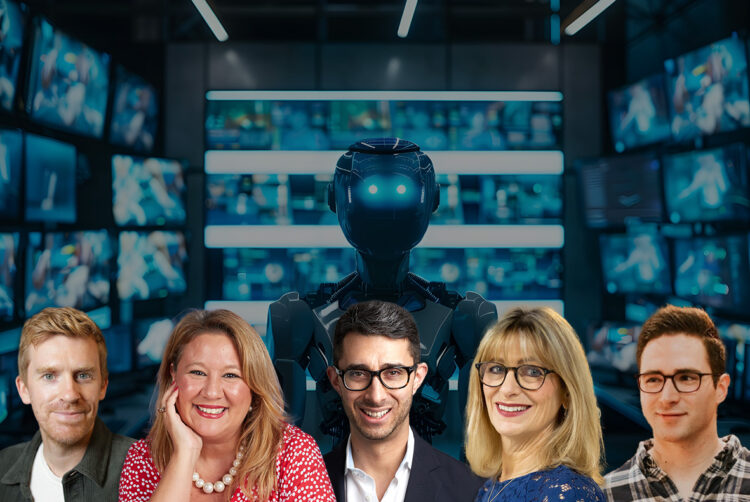What will be the best AI innovation in TV?

Since ChatGPT came on the scene, AI and its potential impact on advertising, content and the workplace keep coming up in conversations across the industry.
But where will it have the biggest impact in TV? The Media Leader asked leading executives what they think will be the best innovation in the space, whether it has been conceived yet or not.
Lindsey Clay, CEO, Thinkbox
 “You’ll be sad to hear that I won’t be unveiling my incredibly clever AI idea that will transform TV and make me rich beyond measure.
“You’ll be sad to hear that I won’t be unveiling my incredibly clever AI idea that will transform TV and make me rich beyond measure.
“Instead, I’ll highlight the fantastic work the TV companies are already doing using AI to turbocharge contextual targeting.
“Channel 4, ITV and Sky have all developed AI tools to scan, identify and categorise moments and themes in their shows that can be used to create buyable segments for advertisers.
“Advertising is all about context and using AI to go deeper into content to reveal unexpected contextual harmonies for brands is a rich new seam of relevance and impact to tap into.”
Scott Measor, head of AV, Starcom UK

“In the future, AI will help facilitate relevant, personalised ads at scale across all forms of TV.
“AI could determine which TV ads are most appropriate and engaging for each household based on their past viewing habits, online behaviour or other known attributes.
“Ads could also be served in contextually relevant environments, identifying the content in a programme before an ad break and ensuring the most suitable messages play out.”
Laura Chaibi, director of ad marketing and insights, international, Roku

“Scripted programming accessible in local languages in real time. English-language and scripted programming produced in the US and the UK have dominated much of the global media licensing landscape.
“While the increasing popularity of Korean programming, for example, has demonstrated an appetite for content from all around the world.
“AI will create more opportunities for audiences to access and enjoy foreign-language content through AI-powered real-time translation. This is one of the many innovations AI will bring to TV.”
Oli Saunders, global head of addressability and dynamic creative optimisation, Wavemaker

“Until now, it can be considered representative of the wider TV market that most TV ads involve no creative optimisation. Essentially, the same creative is being served to all audiences.
“Choreograph’s geo-based approach, together with its integration with key data providers such as Mastercard and Experian, is facilitating the future of connected TV. It is what we call ‘advanced TV’.
“This includes the systematic blending of data inputs into the real-time production of a relevant creative for each postcode by default. By optimising these templated creatives as a campaign unfolds, this geo-based approach can help media agencies and brands dial down underperforming geographies and/or trial novel creative messaging to encourage performance.
“In a nutshell, it helps media agencies extract the truths about what’s working or not working, for which audience and why. This approach will enable a revolution in the refinement of performance, as we know from other channels that audiences respond to content that they perceive as relevant. Doing this in real time, at scale, across geographies, with the technical barriers involved, is currently challenging.
“However, the exponential march of AI progress will make this even more possible.”
Ben Gottdiener, co-founder, Narrativ

“Once things like Sora and Narrativ are commonplace in the ad creative stack, you’ll be able to generate TV ads much faster.
“This will yield much faster ad creation, distribution and measurement, which should boost experimentation.
“Ultimately, I think we’re about to see massive spikes to ad volume across the board.”



